Ep. 6: Wave, Listen to Me!
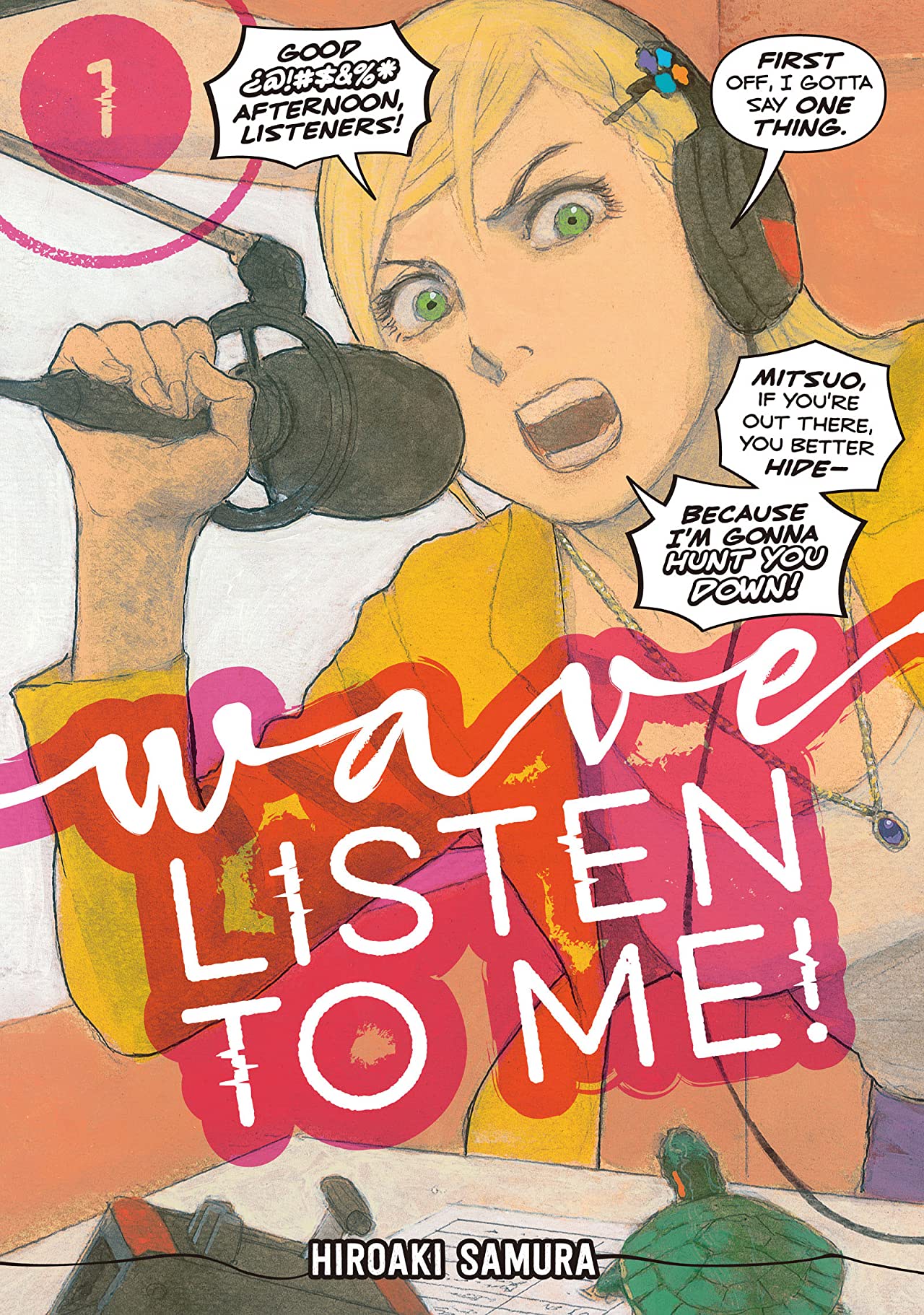
What if your bar-stool complaining about your love life made it to air, and became a hit radio show? Wouldn’t that make for a great manga? Find out what the gang thinks of Wave, Listen To Me! this episode!
Powered by RedCircle
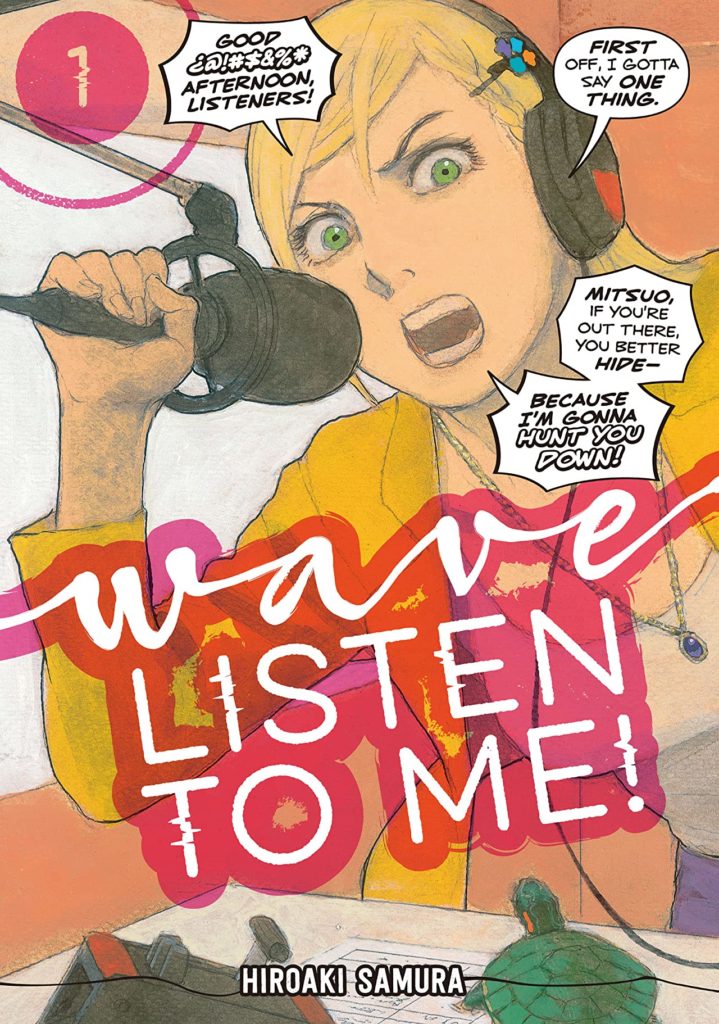
Wave, Listen to Me!
波よ聞いてくれ
By Hiroaki Samura
Translated by Adam Hirsch, with Jiajing Sun
Lettered by Darren Smith, with Michael Martin
Published by Kodansha Comics (Print & Digital)
Let’s start off this week with the description of this volume/series from the publisher’s website, shall we? I think maybe we’ll do this going forward.
SHE HAS A FOUL MOUTH. SHE HAS A MICROPHONE.
AND SHE’S MAD AS HELL.Minare’s tired of men, she’s tired of work, and she’s tired of being told she’s too old to be single. One night, she gets drunk and unloads onto a kind stranger–but what she doesn’t know is this stranger works in radio, and he wasn’t just listening, he was recording. Hearing her own pitiful rambling broadcast the next day, Minare rushes to the studio and hijacks the mic. Now, for the first time, an entire city will have to listen to one woman’s rage…
Publisher Description
0:45: So Wave, Listen to Me!’s author, Hiroaki Samura, made his debut in North America with the series Blade of the Immortal, published as both single-issue comic books and trade paperbacks by Dark Horse Comics. The story of a wandering samurai cursed never to die, the series was released before the manga boom of the 2000s and is considered a ‘classic’. Known for its detailed, scratchy art and incredible swordfights (and other violence), to say that a love story set in modern-day Hokkaido is something of a departure for Samura is… an understatement. Check out some of the art below.
1:45: David mentions Love & Rockets, by brothers Gilbert Hernandez and Xaime Hernandez, published by Fantagraphics. It’s… too big to explain here. But it’s very good and worth getting into, check it out on the Fantagraphics website. https://www.fantagraphics.com/collections/love-and-rockets
2:20: So what exactly is Soup Curry? It’s a curry flavoured soup, thicker than most soup, thinner than most curry, using a different spice blend than traditional Japanese curries. Originated in Sapporo, Hokkaido, and usually full of roast chicken and seasonal vegetables, the variations are basically endless. Here’s a picture from Christopher’s adventures with soup curry in Hokkaido.
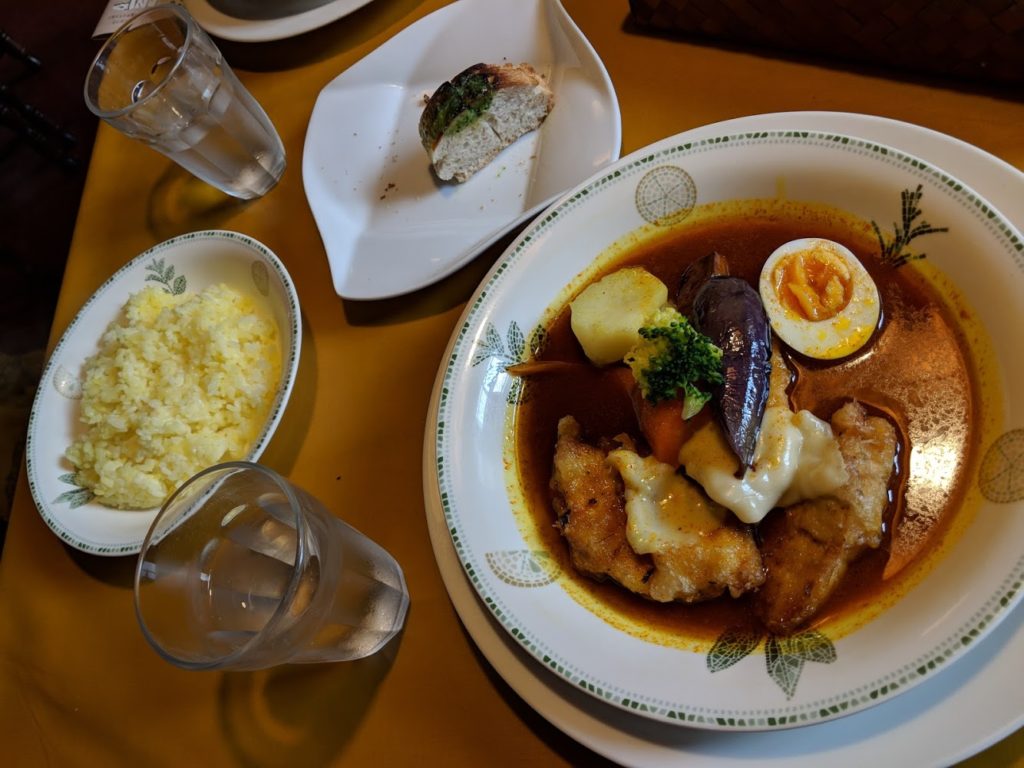
You can read more about it and where it came from, and learn to make your own at Just One Cookbook. https://www.justonecookbook.com/soup-curry/
5:30: There are a LOT of local references in this book!
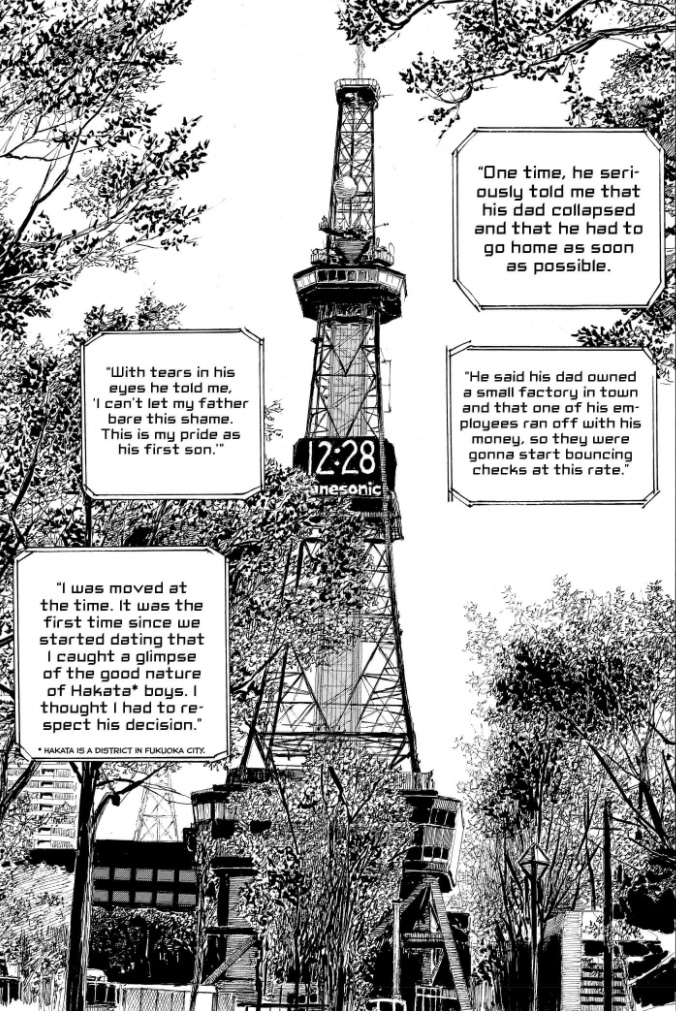
7:10: Yeah that 3-point perspective really grounds a scene. And yeah, his dudes do look like Becky Cloonan dudes. 🙂
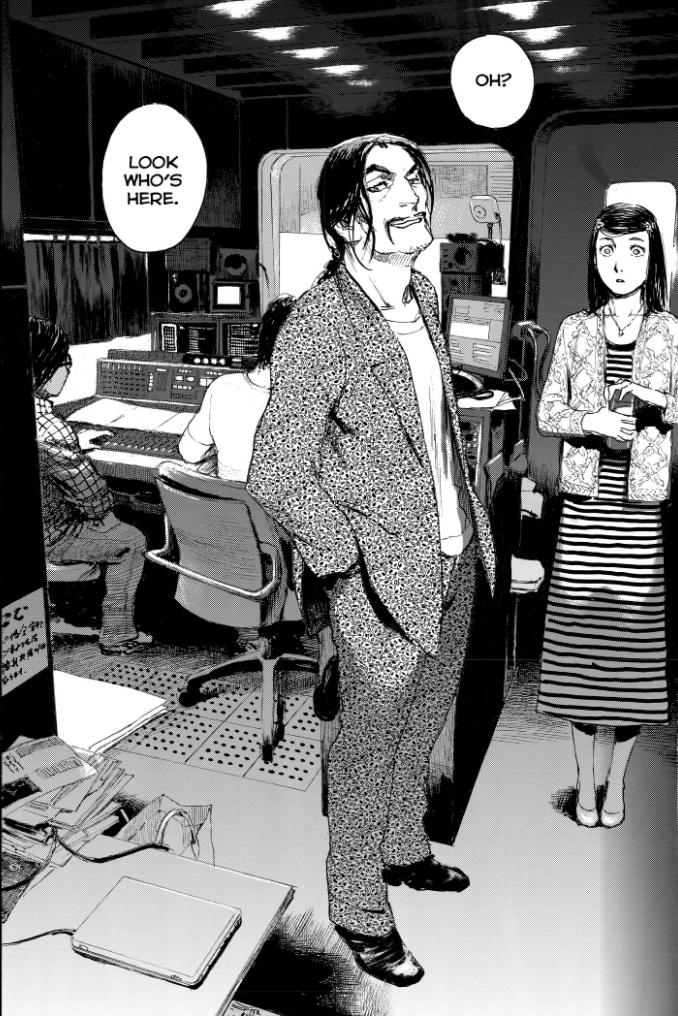
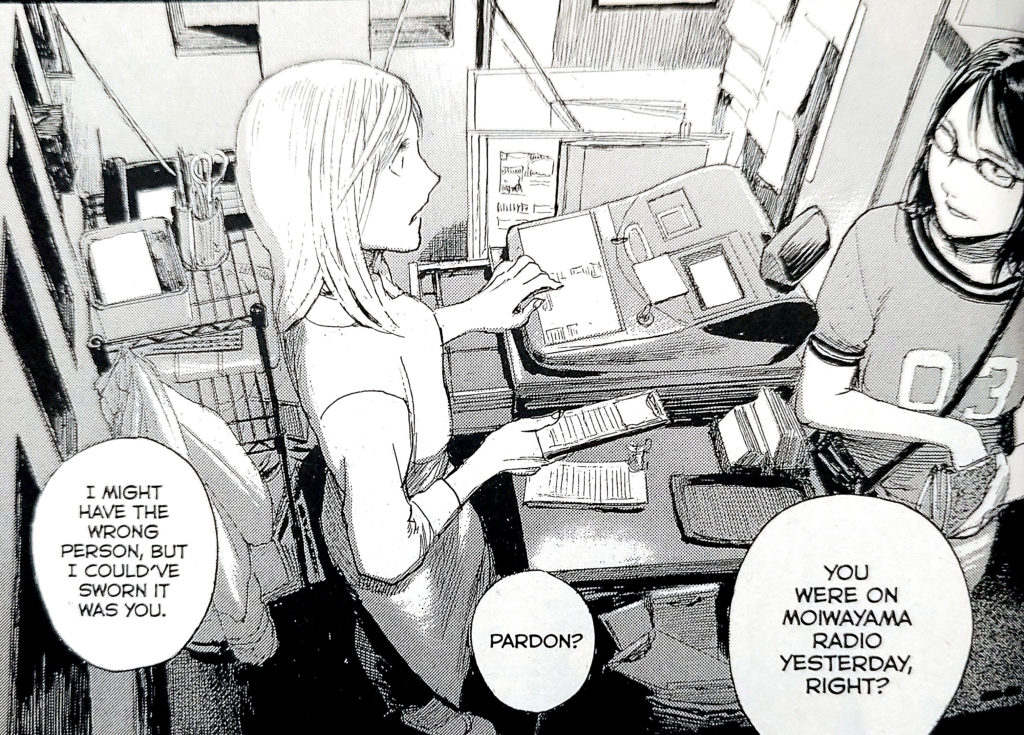
8:23: So we might have turned our heads away from our mics while discussing this, but to be clear, the pixelated coin is from the multimedia franchise Yo-Kai Watch. A collecting-monsters video game a la Pokemon at it’s core, the series instead focuses on Yokai, traditional Japanese spirits and monsters, and it spawned toys, anime, and… well, everything. Manga too, actually, published by VIZ Media. Anyway, it’s not a coin, it’s a medallion.

11:34: It’s true, despite the description of this title on the back of the book (and that we copied above), the lead doesn’t ACTUALLY start their radio job until the last chapter of this volume. Hopefully listening to this podcast will mitigate your expectations a little and you won’t end up quite a disappointed as Christopher did… but more on that in a few minutes.
As for *decompressed storytelling*, that’s sort of what manga is known for, having a different sort of pacing to the plot that’s more luxurious, let’s say, than economical. There was a big hub-bub in superhero comics when things started to get decompressed back in the 2000s (manga influence!), with many older fans very, very upset that it took the Ultimate Spider-Man series 6 issues to tell the origin of Spider-man, when Steve Ditko and Stan Lee did it in like 15 pages back in 1963. One method favours economy of plot, the other favours characterization and broader storytelling. It’s one of the reasons a lot of superhero readers, especially long-time superhero readers, are biased against manga. More on that some other time though.
Interestingly though, and as an aside, the anime adaptation of Wave, Listen to Me! Actually starts in-media-res, with her already having the radio station job, and then jumps back to the beginning of this volume…!
17:15: Christopher is talking about the Konishi Award, the award given to excellent French-language translations of original Japanese manga. He got it wrong though, it was nominated for the first award, but the French edition of Golden Kamuy, another Hokkaido-set manga, actually took it. Whoops.
19:20: Look, the writer’s afterward to this volume is really good, and we read some good bits, but there are more good bits, and I highly recommend you get the book and read it for yourself.
22:10: Crunchyroll has a manga app! If you have a subscription to Crunchyroll, there’s like, a whole ton of free manga on there. There are often… problems… with it, but still, check it out.
24:00: The turtle instruction page is the best. Let’s go ahead and share that.
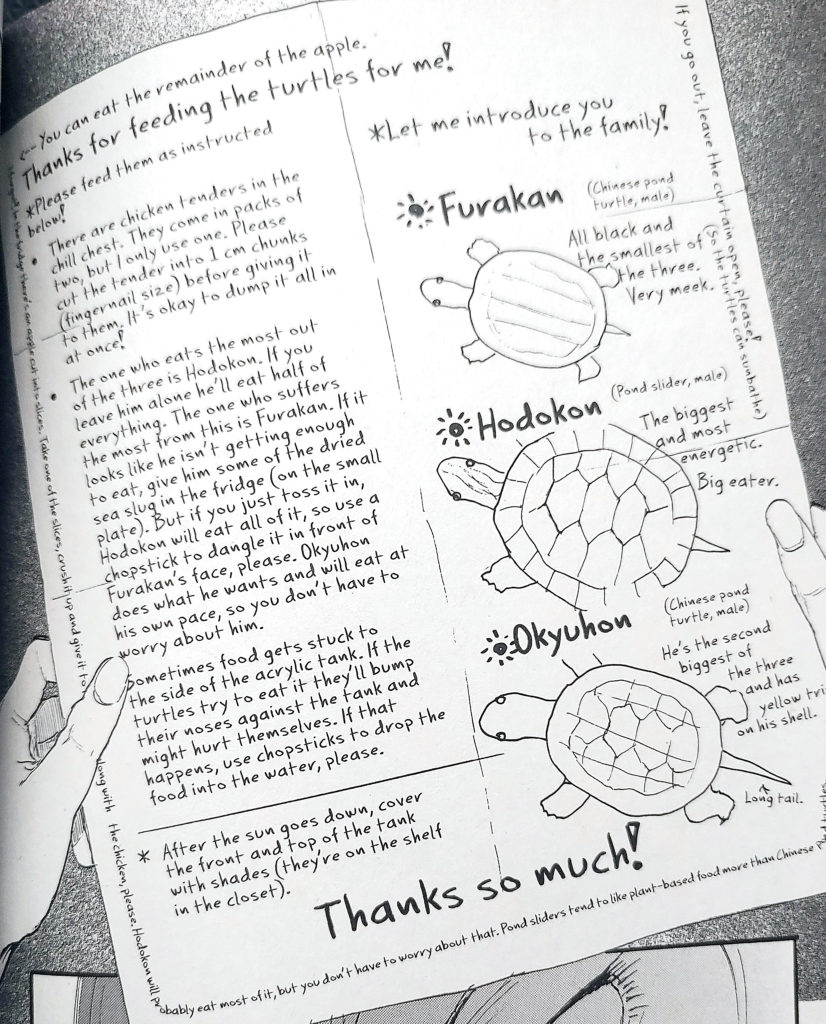
25:20: The different postures of drinkers here really do tell you a lot about the two characters. It’s a great bit of storytelling.
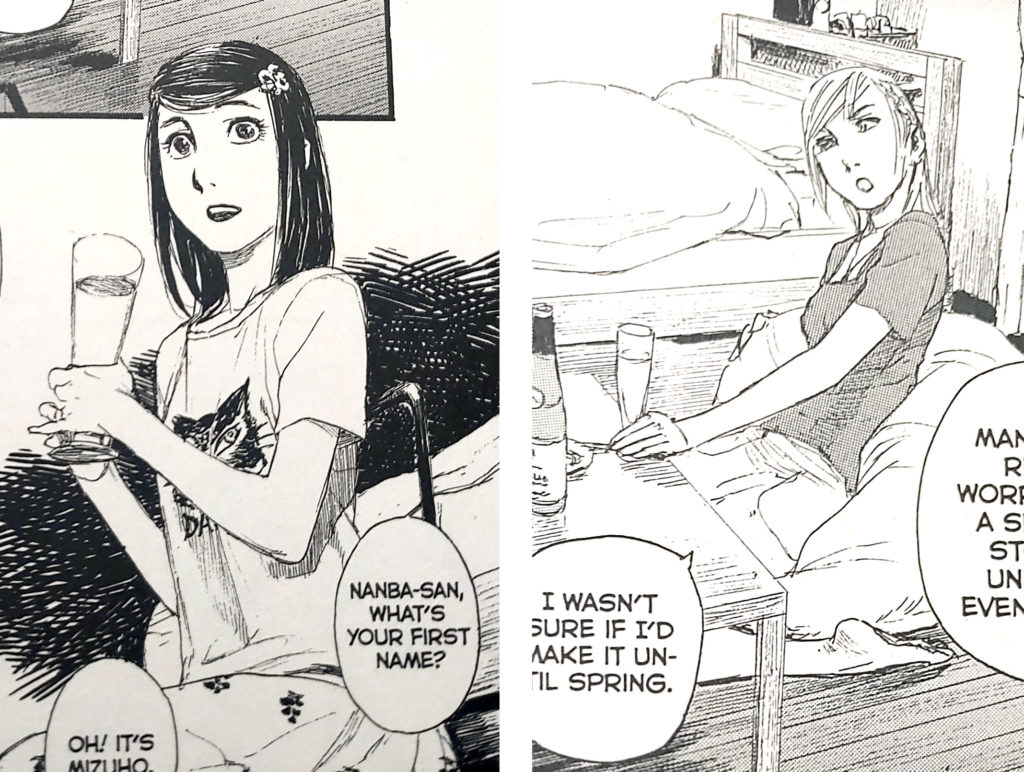
29:30: Shonen Jump is probably the biggest single brand of manga in the world, but it’s not hard to see the difference in the quantity of titles between the listing at VIZ’s Shonen Jump online portal, Shueisha’s Manga Plus website, and the Japanese Shonen Jump website in terms of what titles are offered where and to what audiences. Absolutely, the big titles appear on all 3, but there are gaps where content is carried between all 3, because the audience for each is different despite coming from iterations of the same company.
32:30: Mitsuo from Fukuoka: Your days are numbered.
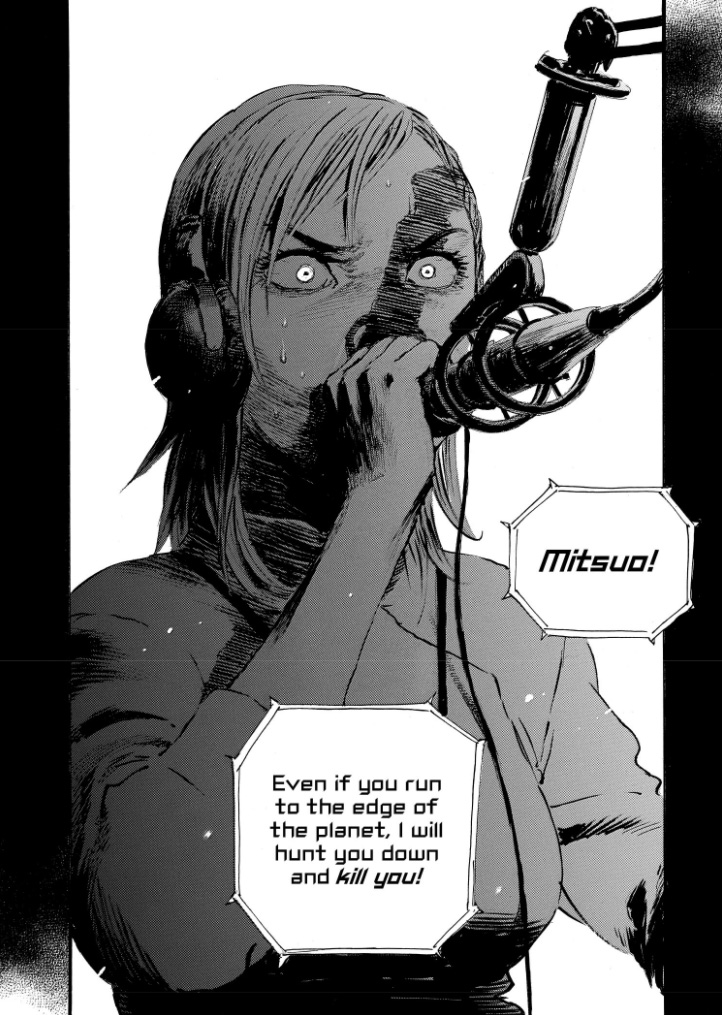
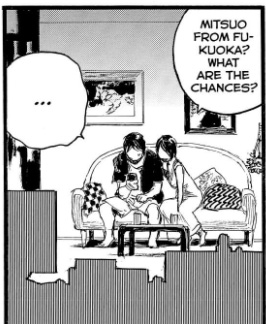
34:00: As David mentioned, a trope in manga where the more powerful person appears big. When she’s yelling at her boss, it’s a great effect. The stat bars hammer the point home.
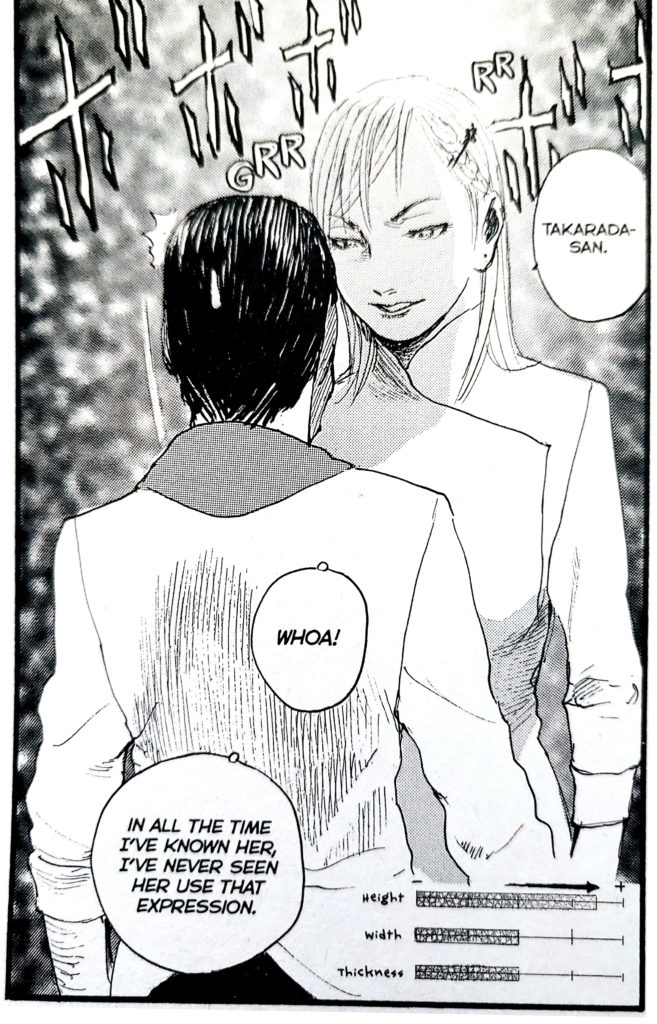
35:15: The badly-proununced name is Die Wergelder, which is Samura’s manga series, also released in English, that came out here between Blade of the Immortal and Wave, Listen to Me!. It has more of the stuff that’s maybe absent here in the series we’re discussing. It’s a revenge action thriller and it’s heavy on the kinks that Samura goes for. You can read the first chapter on the Kodansha website, and it’s available in print as well.
For real though, stay away from his artbooks unless you’re into extreme BDSM.
36:45: That girl’s feet… a reasonably innocent image as long as you don’t know the context of the rest of Samura’s work.
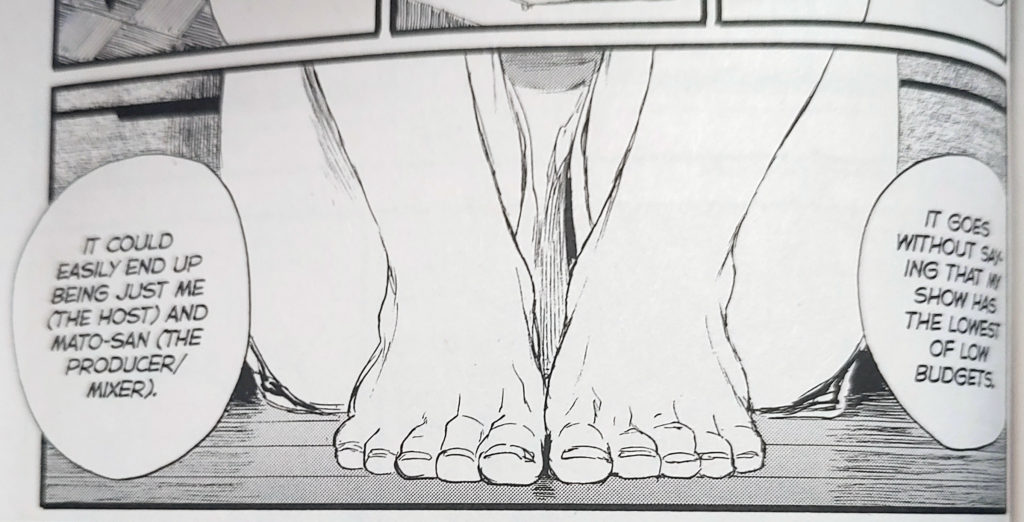
43:00: Glass Mask is, as Deb points out, a manga about a young woman becoming an actress, her competition, and her struggles. There are illegal scanlations out there if you’re interested.It’s a good choice on Samura’s part to tie into the different parts of the story and give it some resonence. You can read more about the series on Wikipedia, but since we get visuals here on show notes, here’s some of that awesome, classic shoujo artwork.
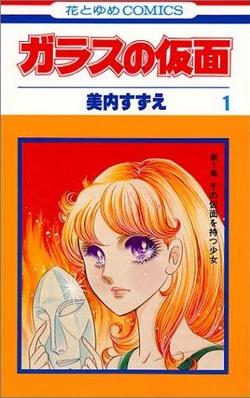
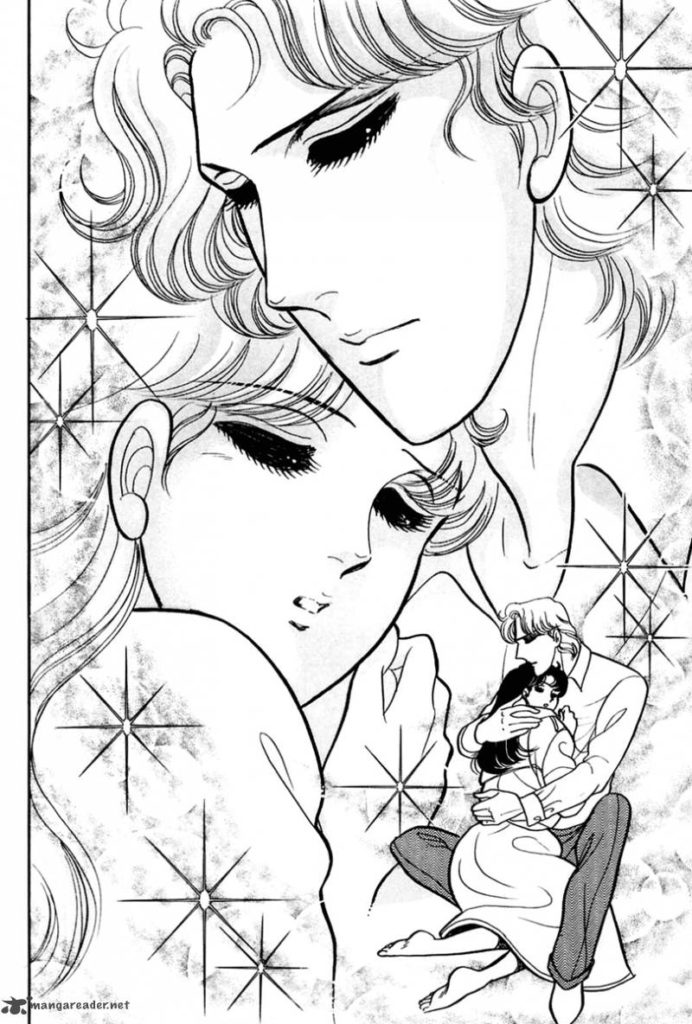
44:20: It’s a real good joke. Here it is for you.
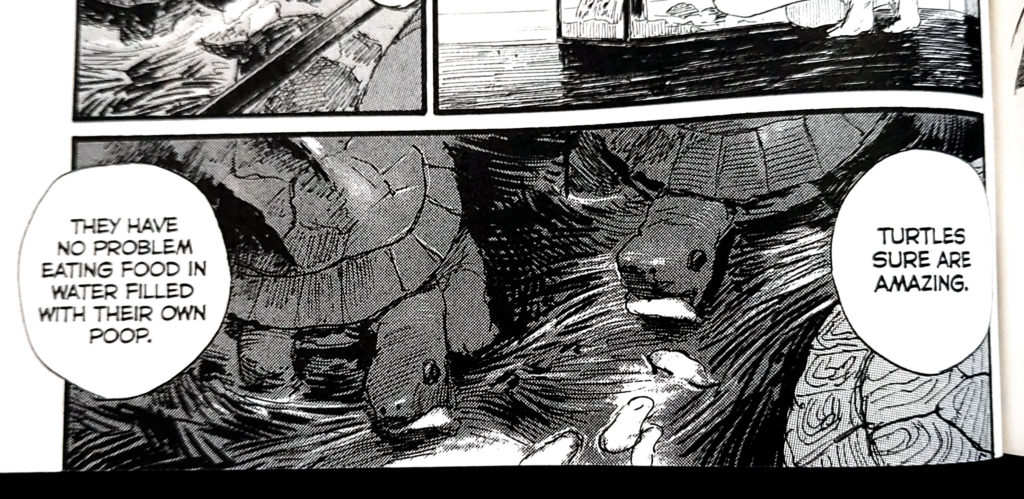
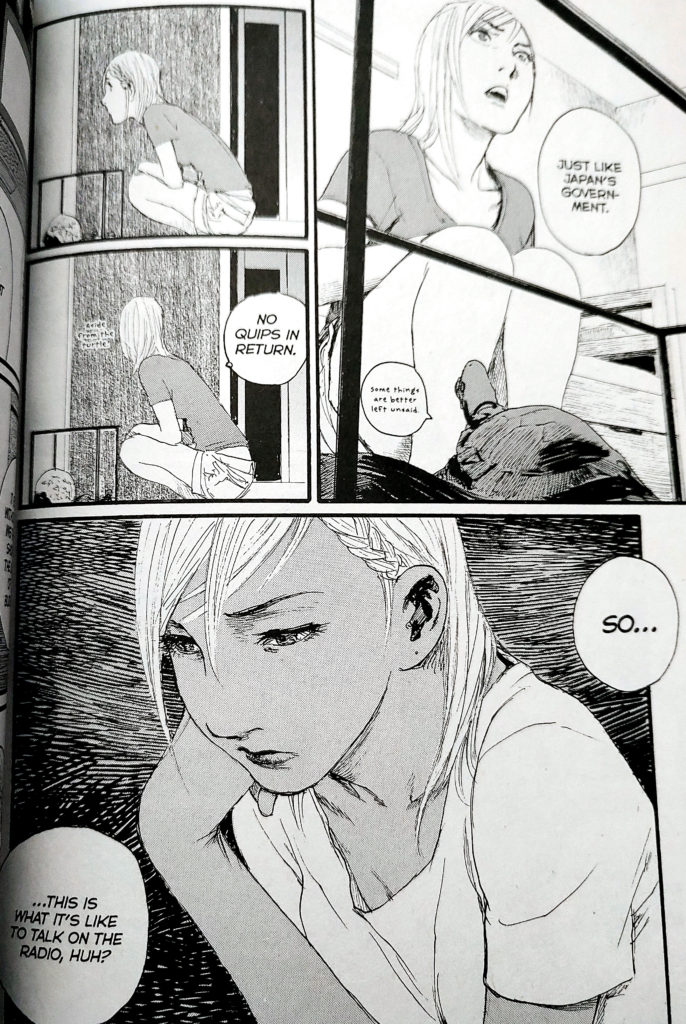
48:45: You know what Saga is right? The hit space opera comic book series by Brian K. Vaughan and Fiona Staples? One of the bestselling comics of the 2000s? Published by Image Comics?
49:45:

53:30: That first double page spread is a beaut. What do you think, is it Minare? Is it the actress that Mato-san keeps mentioning?
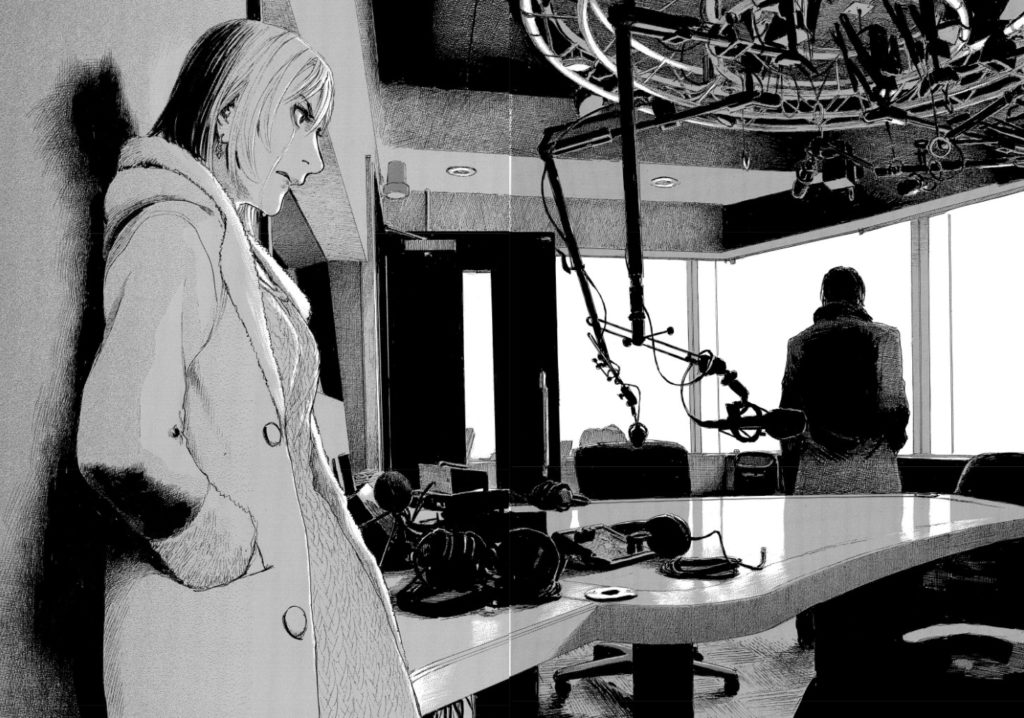
54:00: A quick look at the binding on the physical edition. Text/printing problem.
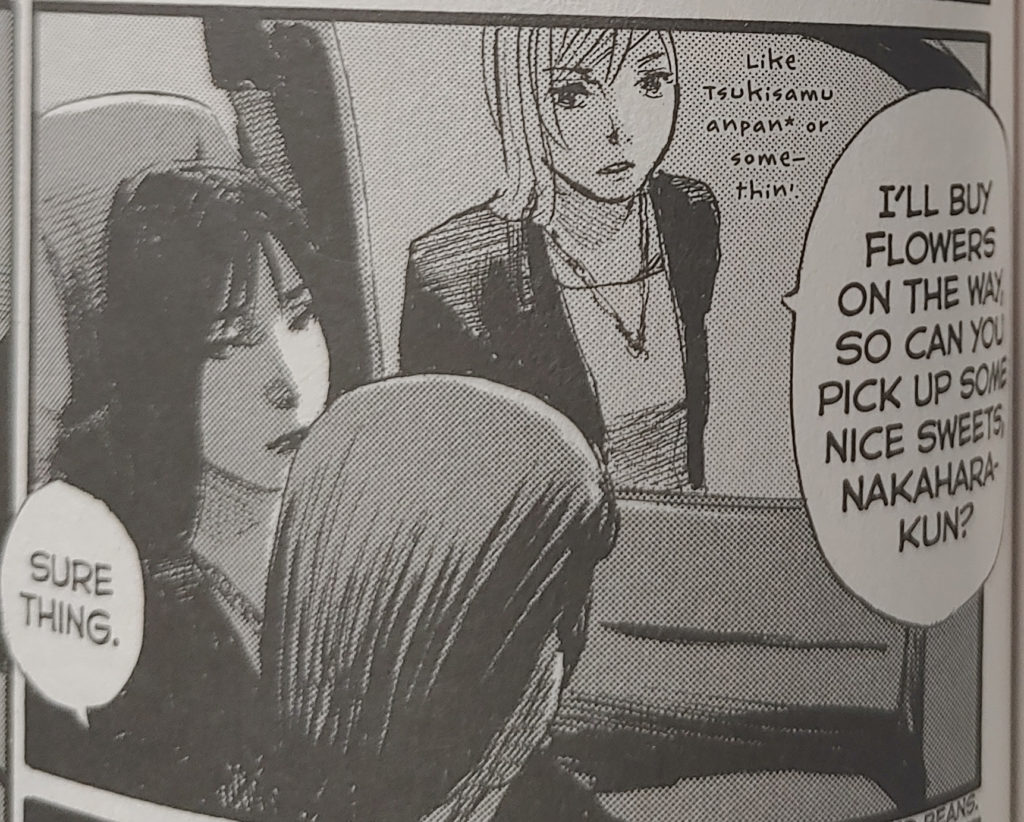
55:04: THE BREAK! Please note that, because ads on our podcast are introduced dynamically, we actually don’t know how long they’ll be, and so all of the time-stamps after this point are going to be off by 15-45 seconds. Sorry!
55:??: After the break, we take a second to talk about upcoming books! But since we’re talking about it, here’s the complete list of episodes, present and future!
Ep. 1: AKIRA Volume 1, by Katsuhiro Otomo. Published by Kodansha Comics.
Ep. 2: Delicious in Dungeon Volume 1, by Ryoko Kui, published by Yen Press
Ep. 3: Mermaid Saga Volume 1, by Rumiko Takahashi, published by VIZ Media
Ep. 4: Helter Skelter, by Kyoko Okazaki, published by Vertical Inc./Kodansha
Ep. 5: What the Font?!, by Kuniichi Ashiya. Published by Seven Seas.
Ep. 6: Wave, Listen To Me! Vol 1, by Hiroaki Samura. Published by Kodansha
Ep. 7: Yotsuba Vol 1, by Kiyohiko Azuma. Published by Yen Press (Mar 30)
Ep. 8: Way of the Househusband, by Kousuke Oono. Published by VIZ Media. (Apr 6)
Ep. 9: 7 Billion Needles Vols 1-4, by Nobuaki Tadano. Published by Vertical Inc. (Apr 13)
Ep. 10: Tekkon Kinkreet, by Taiyo Matsumoto. Published by VIZ Media. (Apr 20)
Ep. 11: Fullmetal Alchemist, by Hiromu Arakawa. Published by VIZ Media. (Apr 27)
Ep. 12: Oishinbo, by Tetsu Kariya and Akira Hanasaki. Published by VIZ Media. (May 4)
Ep. 13: Beastars, Vol 1, by Paru Itagaki. Published by VIZ Media. (May 11)
1:02:15: This is the cover that Christopher was talking about. It’s… a lot.
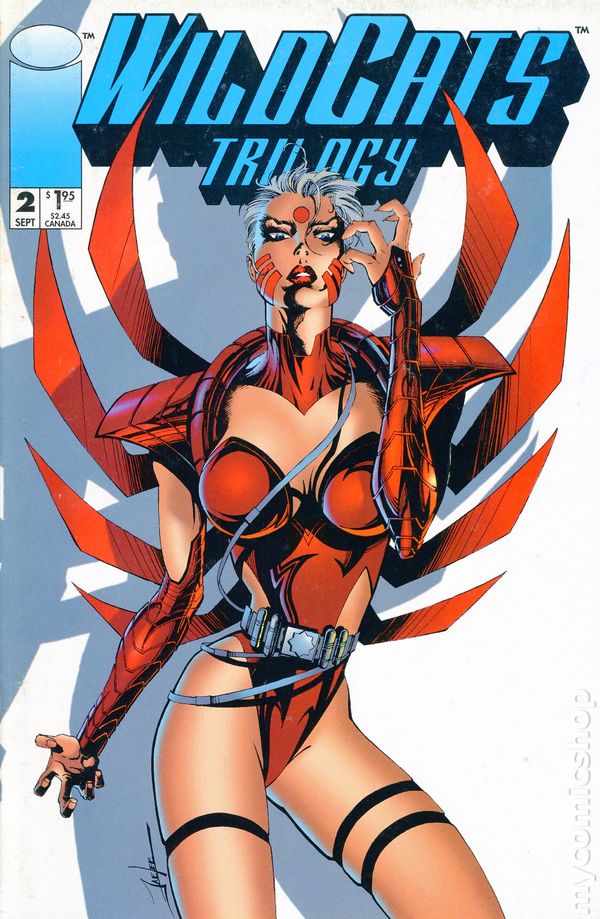
1:03:30: That link again for Mike Stafford’s instagram is @discogsandchill. Thanks again to Mike for the hookup!
1:04: Shout out to D.A.D.S., and you can find them on Spotify.
1:04:15: Shout out to Chip’s work on Daredevil.
And that’s it for this episode! Thanks for listening. That link for the Comic Shop Locator service is http://www.comicshoplocator.com. See you next week!
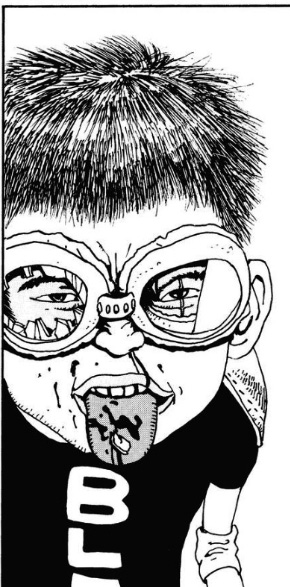
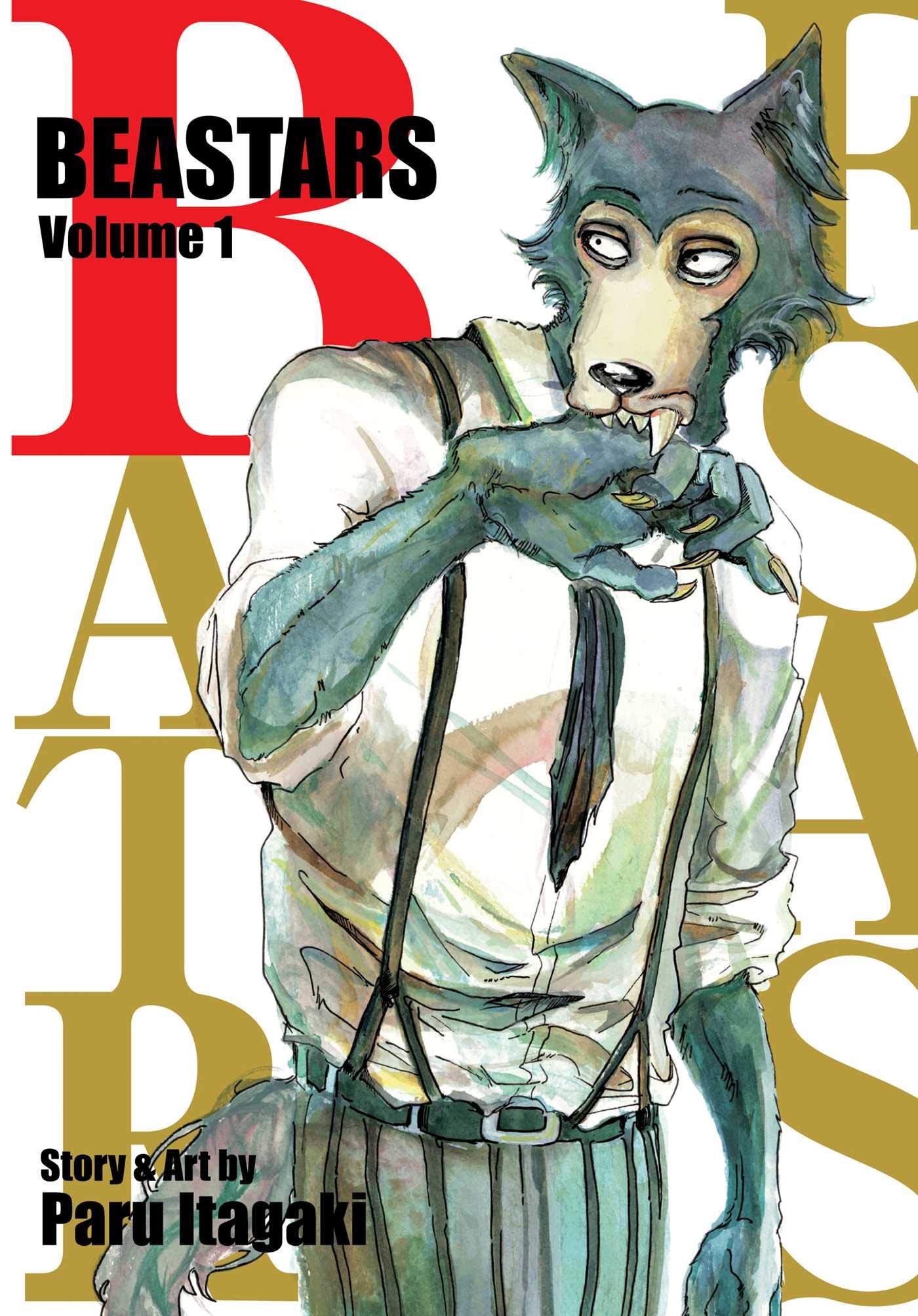
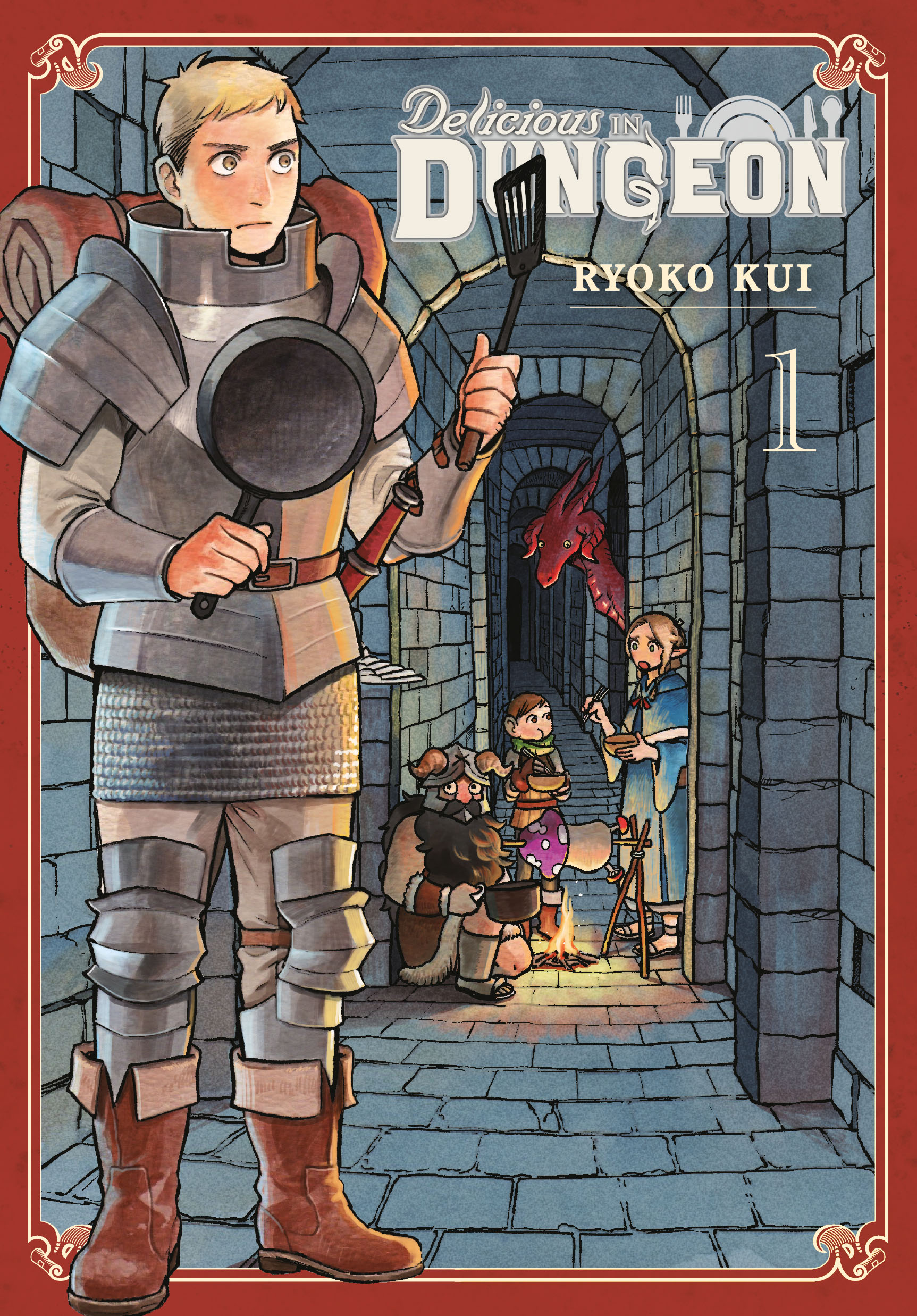
Great episode. It’s easy to praise a book, but I have more fun hearing about the criticisms of a book too, both from a storytelling perspective, like how the early chapters seemed so random, and from a technical perspective, like the lettering problems in What the Font?! and the binding problems here.
By the way, about the binding being so tight, I think that might be a reoccurring problem with some of Kodansha’s books. Here’s a pic of another one of their books, My Little Monster, where the text disappears into the gutter.
About the Crunchyroll manga app, they actually updated it at the end of last year, so it might not have ‘problems’ anymore. Unfortunately I don’t have a CR subscription anymore, but if somebody at Mangasplaining has it, it might be worth revisiting.
Thanks for your comment! Sorry to hear the binding issue effects other books as well, we’re such big fans of print material it’s annoying when the digital is a better format. As for CR manga, we might dive back in at some point there. Thanks again!
Thanks for the episode, it was great. I will buy Wave asap!
I cant wait for the next episode. Yotsuba is one of my favorite series.
I would recommend Blame! by Nihei because its so unique. Chainsaw Man (vol 1 and 2 at least) because this series will be the next big thing in America or Dorohedoro (even if the art is rough at first).
This series flew completely under the radar for me, so thanks for discussing it. Gotta say, I did enjoy the drama between Chris and Chip because it did engender a pretty rich discussion of the book.
I appreciate you always shouting out the translator/s on each episode. I think it’s interesting this series said nope to localizing the references and yes to footnotes and annotations. I am curious why the title remained a literal translation of the Japanese, though (and why the word wave is singular and not plural). If this had come out 5 years ago, you could definitely see it being titled something cutesy “You’re On Air” or “Minare Gets It Together” or “Broadcast Blues.” I suppose, as you pointed out, it’s hard to nail down what the series is about just from this single volume, and I suppose giving it the same title as Japanese doesn’t lock into a something more tendatious as an original English title would. I’m sure the translator fretted how to translate that bit of poetic apostrophe, because addressing nature directly (Yama yo! [mountains] Umi yo! [sea]) isn’t very common in the English language, at least this far removed from the Victorian era.
Ok I continue to be a latecomer to the pod cast. I must say I was jazzed when it was decided to cover Wave, Listen to Me! This is one of my favorite Samura works, I hope more readers have come to it as a result of the podcast.
As I take notes on all the cultural references, locations, etc this series has a wonderful high density. I’m so glad they kept all the pop culture references in.
Us too! Thanks so much for commenting! Lovely to hear from you.